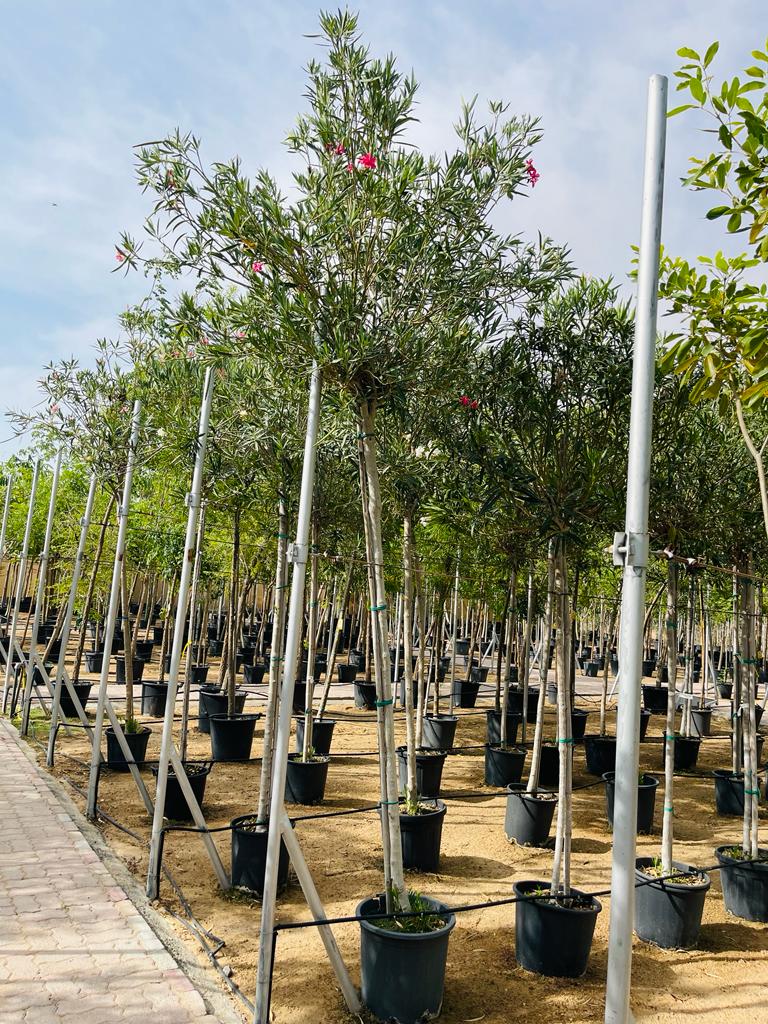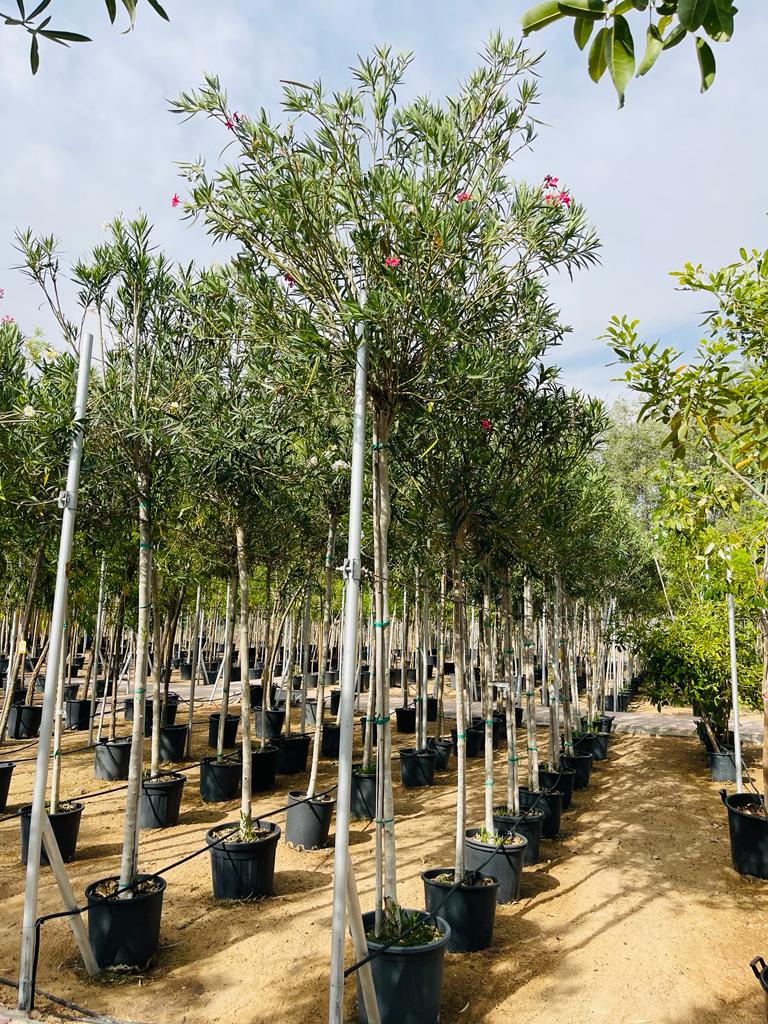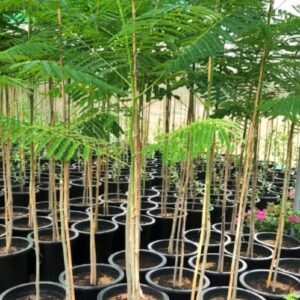Vibrant Oleander Size: 3M
Oleander (Nerium oleander) scientifically known as Nerium oleander, is a versatile flowering shrub that belongs to the Apocynaceae family. It is native to the Mediterranean region but has been widely cultivated as an ornamental plant in many parts of the world. Oleander is known for its attractive, showy flowers and glossy, lance-shaped leaves. The flowers come in a variety of colors, including white, pink, red, and yellow, adding vibrant beauty to gardens and landscapes. However, it’s important to note that all parts of the Oleander plant are highly toxic if ingested, so caution should be exercised when planting it in areas accessible to children and pets.
Vibrant Oleander Sunlight:
Oleanders thrive in full sun and require at least six hours of direct sunlight per day. Choose a planting location that receives ample sunlight.
Vibrant Oleander Soil:
They prefer well-draining soil and can tolerate a variety of soil types, including sandy or loamy soil. Ensure good drainage to prevent waterlogging.
Vibrant Oleander Watering:
Once established, Oleanders are drought-tolerant and can withstand dry periods. However, regular watering is necessary during the initial establishment phase and in prolonged periods of drought. Water deeply, allowing the soil to dry between waterings.
Vibrant Oleander Pruning:
Prune Oleander plants in late winter or early spring to remove dead or damaged branches and promote a compact shape. Use caution and wear gloves when handling the plant as the sap can cause skin irritation.
Fertilization:
Apply a balanced, slow-release fertilizer in spring to encourage healthy growth and blooming. Follow the manufacturer’s instructions for proper dosage and application.
Pests and Diseases:
Oleanders are generally resistant to pests and diseases. However, occasional infestations of aphids, scale insects, or spider mites may occur. Monitor the plants regularly and treat any infestations promptly with appropriate insecticides or by using natural pest control methods.
Cold Protection:
In cooler climates, Oleanders may be susceptible to frost damage. Provide protection during cold weather by covering the plants with a frost blanket or bringing potted Oleanders indoors.
Remember to exercise caution when handling Oleander plants, and if in doubt, consult a gardening professional or local horticulturalist for specific care advice based on your region and climate.
Vibrant Oleander Oleander (Nerium oleander) grows naturally as a mounded, round shrub, or it can be trained as a small single- or multi-trunked tree. The evergreen foliage of the oleander plant is dense, leathery, and dark green, offering a privacy screen when planted in groups or borders. Delicately shaped, showy, fragrant flowers tend to be pink, while some varieties produce red, orange, yellow, or white flowers. Blooming for an especially long period, the 1- to 3-inch flowers appear from spring to summer and sometimes early fall and year-round in warmer climates.
Oleander (Nerium oleander) scientifically known as Nerium oleander, is a versatile flowering shrub that belongs to the Apocynaceae family. It is native to the Mediterranean region but has been widely cultivated as an ornamental plant in many parts of the world. Oleander is known for its attractive, showy flowers and glossy, lance-shaped leaves. The flowers come in a variety of colors, including white, pink, red, and yellow, adding vibrant beauty to gardens and landscapes. However, it’s important to note that all parts of the Oleander plant are highly toxic if ingested, so caution should be exercised when planting it in areas accessible to children and pets.








Reviews
There are no reviews yet.